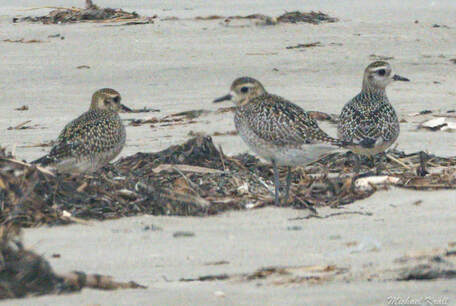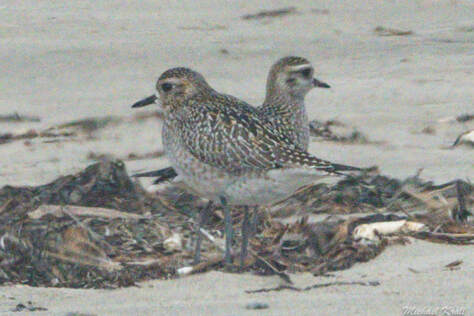We're smack dab in the middle of fall migration now. Recent east winds and forest fires across the state seem to have contributed to some less expected as well as more expected ones showing up. On 9/21, Philip Kline found two Golden-Plovers on Bay Ocean Spit. One appeared to be a Pacific G-P while the other one appeared to be an American G-P. The following day, Kathy and Michael Krall set out to try to re-find these birds. Find them they did, along with now a third G-P. Cliff Cordy joined the viewing with his scope. Although the distinction is challenging, it appears that there were now two Pacific and one American Golden-Plovers. The putative American, showed grayer overall, a brighter and more prominent supercilium, and more white (rather than buff or golden) under the eye. The relative length of the primaries, tertials and tails were a subject of discussion, and were possibly inconsistent with expectation. We are currently waiting for some shorebird experts to weigh in and confirm identity. Until 1993, these birds were both considered subspecies of the Lesser Golden-Plover.
Elsewhere, there have been recent sightings of Buff-Breasted Sandpiper (in Manzanita), Baird's Sandpipers, Greater White-fronted Geese in large numbers, and an American White Pelican, among others.


 RSS Feed
RSS Feed